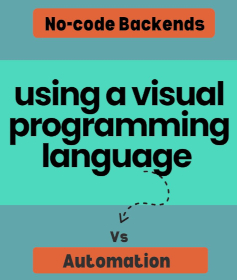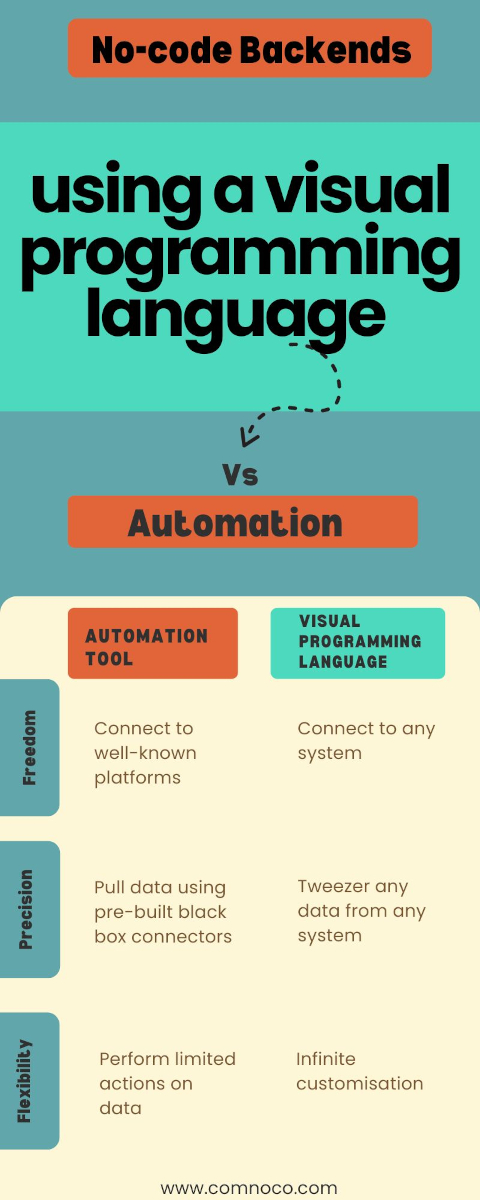
TL;DR No-code automation platforms are focused on automating a few tasks by joining up well known SaaS platforms, while no-code programming platforms can take you beyond popular use cases to integrate more systems and build your own more customised application.
What's the difference?
Automation platforms, (Make, Zapier, etc) enable non-technical users to automate tasks by connecting systems together. They are often targeted at marketers and business users. They offer a visual graphical interface where users choose from a menu of triggers and actions. You can create simple workflows by selecting from pre-built connectors to link a wide range of popular SaaS platforms and applications. For example, a marketer might want to update a spreadsheet each time a customer purchases a product, by connecting Google Sheets to an e-commerce website like Shopify.
No-code backend programming tools (Comnoco, Xano etc) also provide a visual interface and so can also be used without traditional coding but you can create more customisable connectivity. No-code programming tools can do everything a no-code automation tool can do and much more. They are generally targeted at intermediate to advanced no-coders or developers who want to build out a larger network of automations into more complex backend applications.

No-code programming can create and shape the underlying logic that governs precisely when data is called from one system to another and how that data is manipulated/changed from one state to another. So, with visual programming, instead of choosing from a menu of pre-built connectors/APIs, the no-code developer can go beyond popular use cases to:
- Connect to any existing system.
- Make granular queries to pull any data from any system.
- Transform that data in a customisable way.
- Consolidate data in a customisable way.
- Format data in a customisable way.
No-code programming allows users to use more complex algorithms, calculations, or more precise business rules. This means a developer can, for example, create a SaaS platform that targets consumers individually with hyper-personalisation while responding dynamically to unfolding events.
For example, a no-code developer could create the backend of an Airbnb style platform by accessing data from personal accounts, combining that data with past searches and purchase information from an ERP system, serving add ons and making hyper-personalised recommendations and offer logistics and delivery options, even responding to political or climate events.
There is no limit to how and when systems can connect: no black boxes 📦.
About Comnoco
As a visual programming language, Comnoco is not limited to just Extract, Transform and Load (ETL) or just to automating tasks, it aims to offer limitless backend programmability that can scale as your business scales.
Comnoco aims to empower no-coders to achieve almost anything backend developers working in code can achieve. Its programmability permits so many permutations, it fulfils the Turing rules of completeness for a language. Comnoco is a step change from being told what you can do, to having the technology do exactly what you want it to do.
In summary, Comnoco offers no-coders access to greater scale and granular control:
- Don’t select from a pre-set menu of connectors, create your own, with limitless customisability of APIs
- Apply infinite Logic to infinite data points so that automated workflows can follow every conceivable contour of your business needs.
- Programmability so granular that it follows the concepts and rules of a programming language.
The result: a truly bespoke piece of programming.